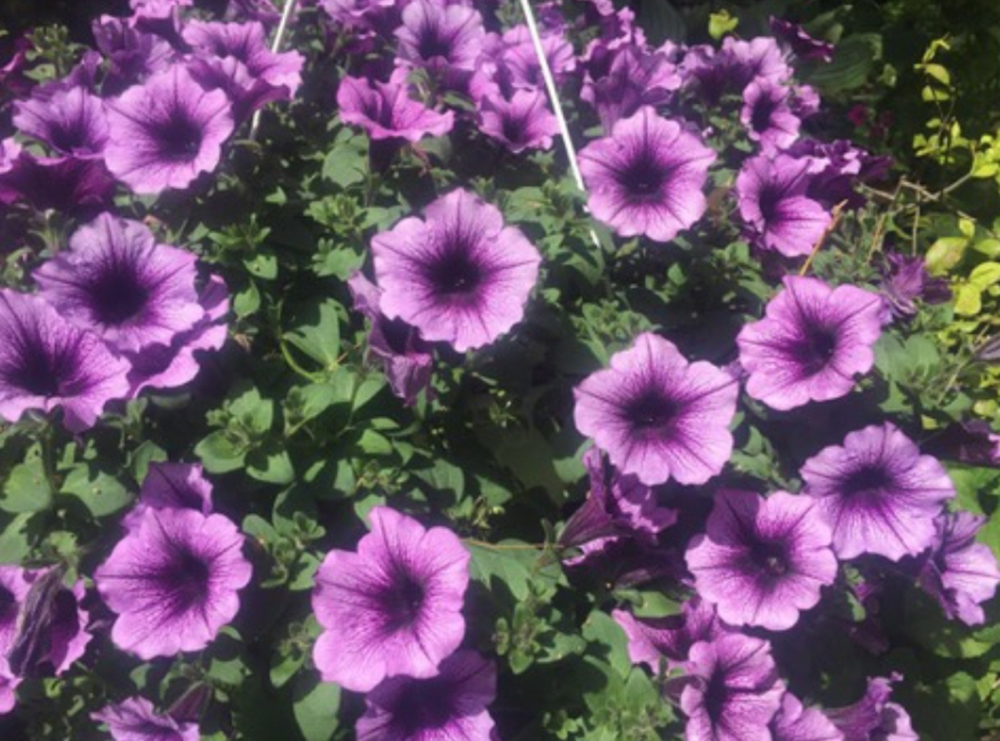By Tammy Thornton
Add wacky weather to the list of strange events in 2020. March was warm, giving us hope, but April and May were unseasonably cold, with the threat of frost often looming in the forecast. Many of my gardening friends exhausted themselves by carting their plants inside and out. Now that Mother’s Day has come and gone, we are finally seeing warmer days on the horizon. Gardeners can breathe a sigh of relief and start planting annuals–those colorful friends that come ready for a party.

Annuals are fast growers and, given the right conditions, are fairly carefree, passing in and out of our lives just for a season. They can instantly brighten a bare spot in the garden and provide a continuum of color while perennials take turns blooming. Every year I look forward to planting flats of “bluish” pink impatiens along my front yard garden. White daffodils and grape hyacinths that dominated the white/blue theme of early spring have gone to seed, leaving a lull in color. But by planting annuals that complement my azaleas, the color scheme transforms into shades of pink that will continue to bloom and spread until fall, well after the azaleas are finished.
True annuals complete their life cycle in one season, producing seeds in the end. Unlike perennials that spend energy on establishing strong roots for longevity, annuals focus their attention on fast-growing flowers that will attract pollinators and produce seeds. Using your annuals for cut flowers and deadheading spent flowers will encourage more blooms.
Gardeners often treat tender perennials as annuals. These plants are native to warmer climates and offer a taste of the tropics with their lush foliage and exotic flowers, but won’t survive our cold winters. We think of palms, caladium, bromeliad, hibiscus, and jasmine. Some talented folks successfully overwinter tender perennials by bringing them indoors, but this takes knowledge and skill (and a little luck).
Just like perennials, annuals have varying sun requirements. Check the garden tags and ask your garden nursery worker about growing conditions before you buy. Coleus, fuschias, and New Guinea impatiens add beautiful colors to a shady corner of the garden. But zinnias, cosmos, and, of course, sunflowers flourish in the sun. Plant petunias and lantana in a sunny spot to attract hummingbirds and butterflies.

Some annuals can be started by seed indoors weeks before last frost to get a jump on the growing season, but others do well by direct-sowing in the garden after danger of frost. Nasturtiums are easy to grow from seeds and make a colorful addition to the vegetable garden. Both the leaves and flowers are edible, adding a peppery flavor to salads. Zinnias, four o’clocks, sweet alyssum, and marigolds are also good candidates to grow from seed. Near the end of the summer, stop deadheading so that the flowers can produce seeds, which can be saved for next year’s planting. Of course, for instant gratification, visit your local nursery for annuals that can fill a pretty container. Growing annuals in pots makes them easy to move around as needed.
Enjoy these special additions to the garden–friends that bring us joy only for a season, but give us color and happiness while they visit. Shore Local would love to see pictures of how you have incorporated annuals into your garden. Send your questions, comments, and pictures to: shorelocalgardener@gmail.com.
Tammy Thornton is a mom of four, a substitute teacher, and a Sunday school teacher. She is passionate about gardening and cooking, and loves the beach.










